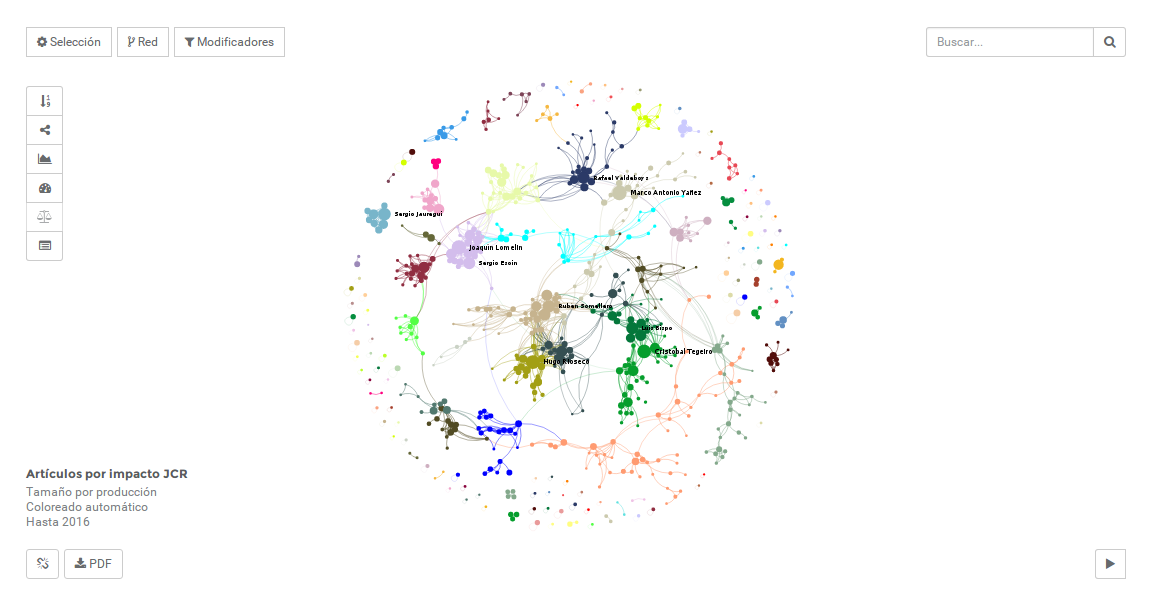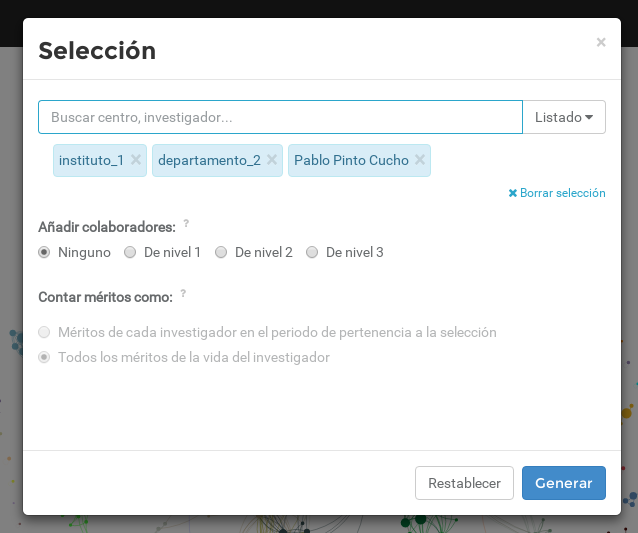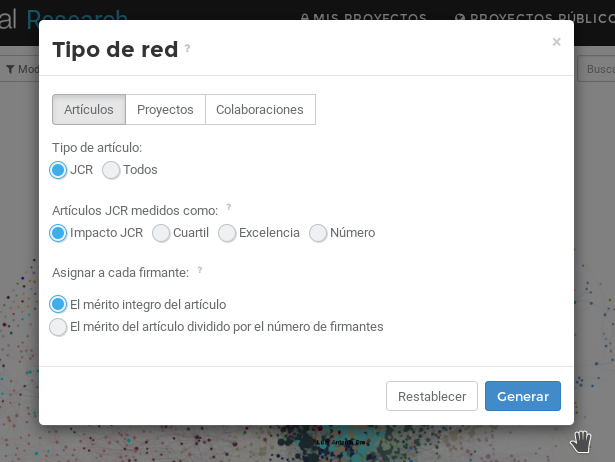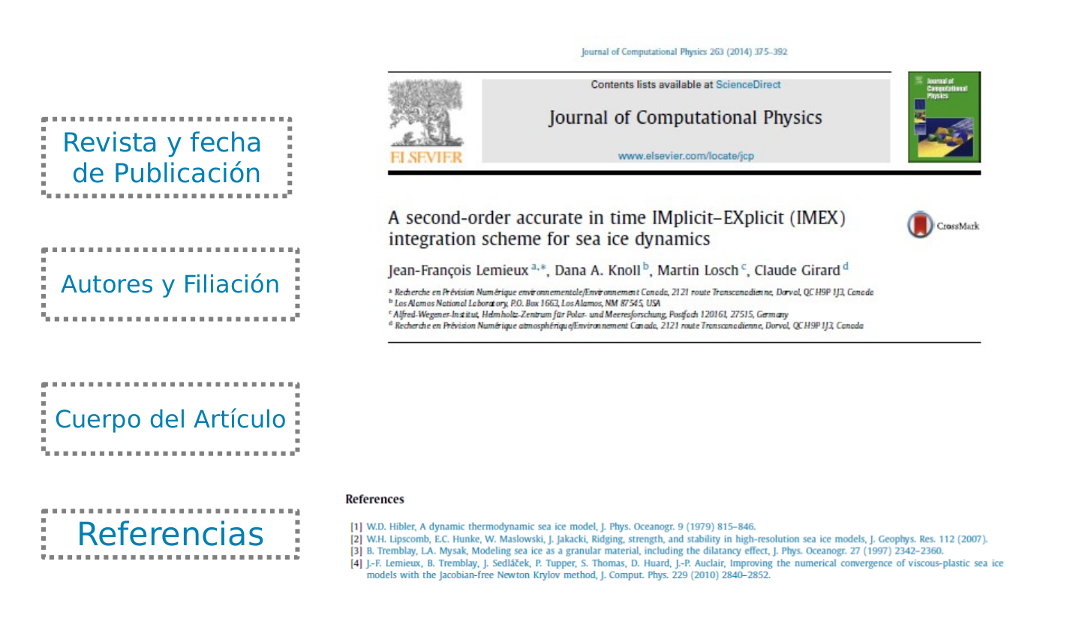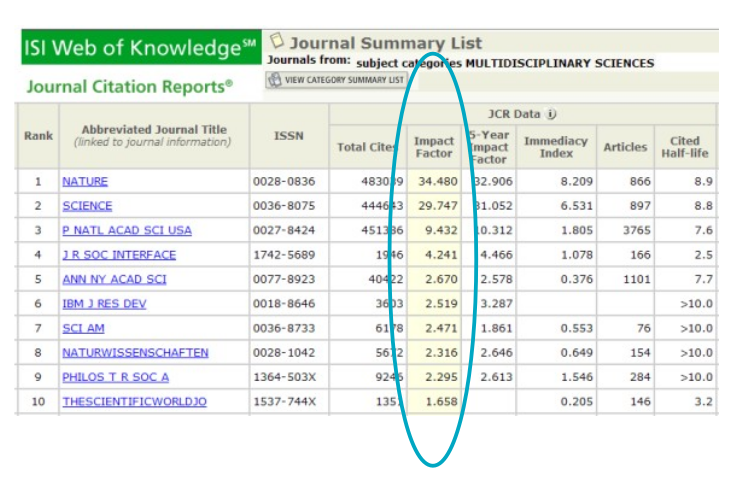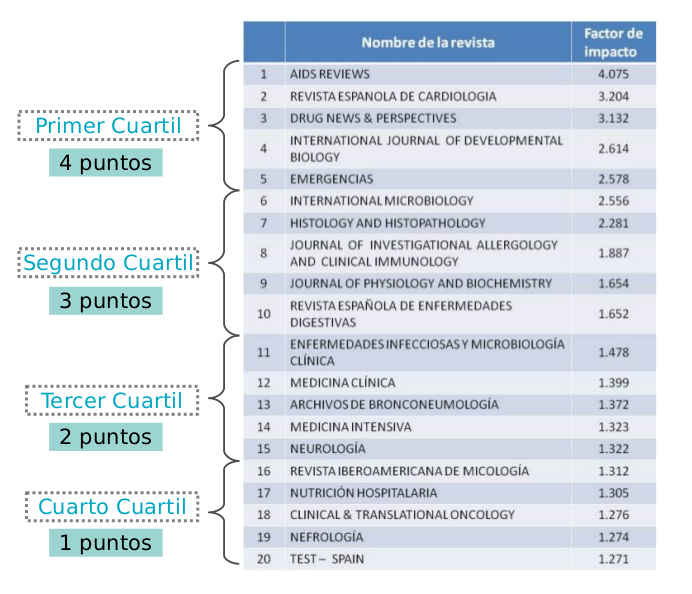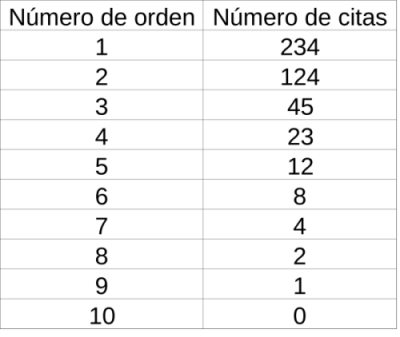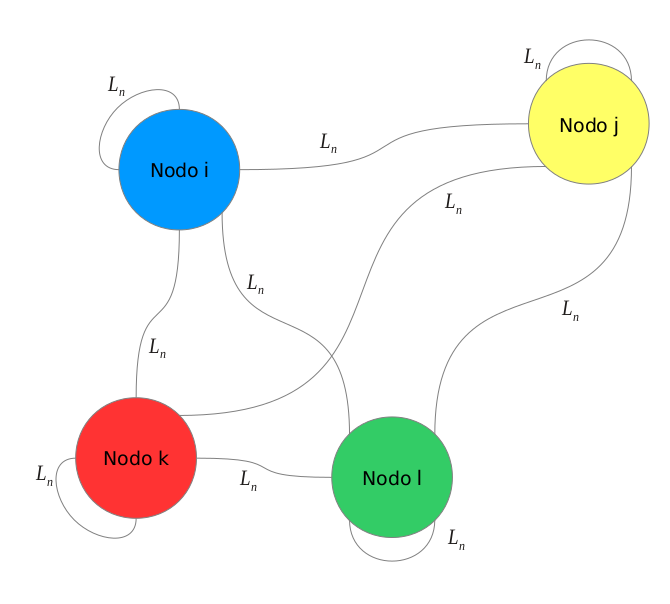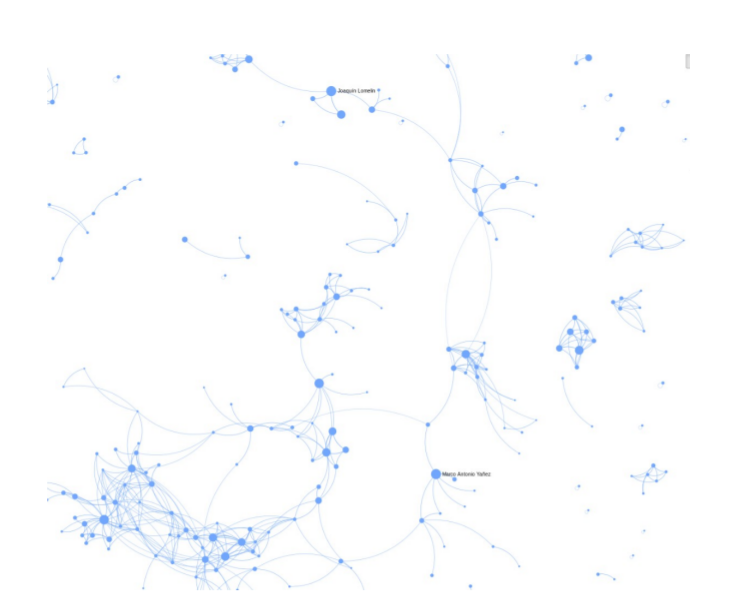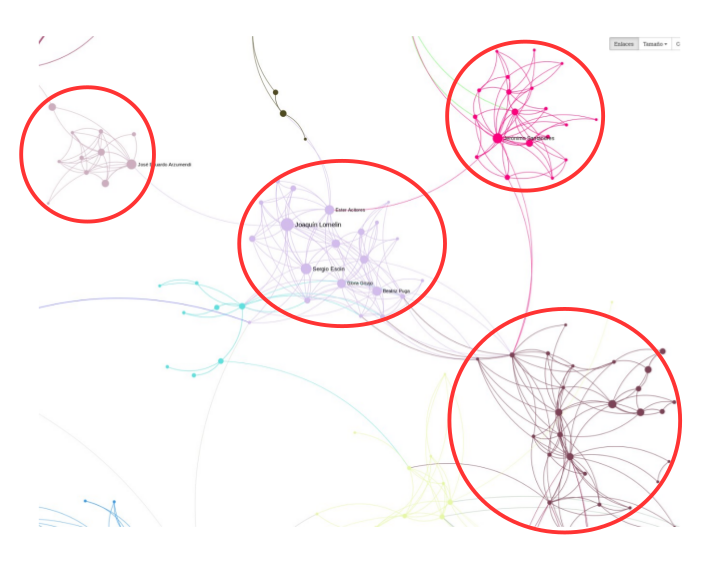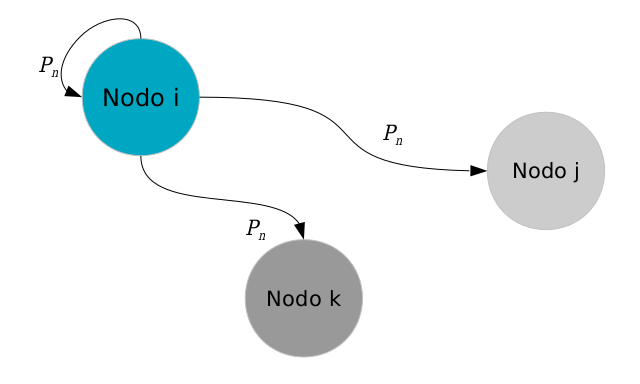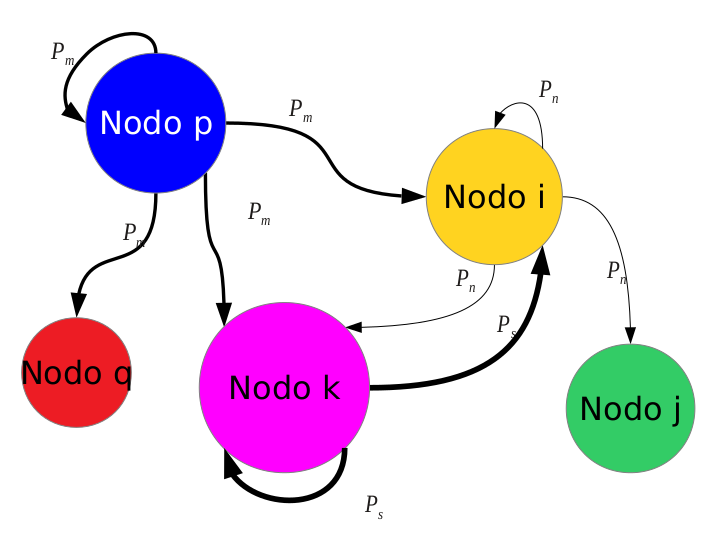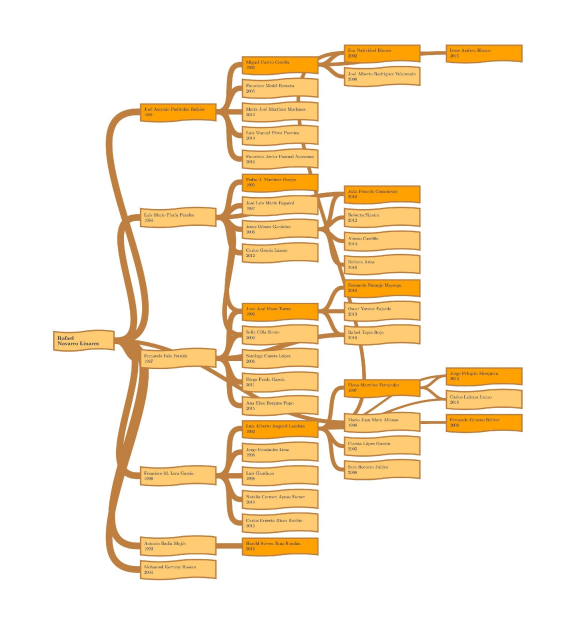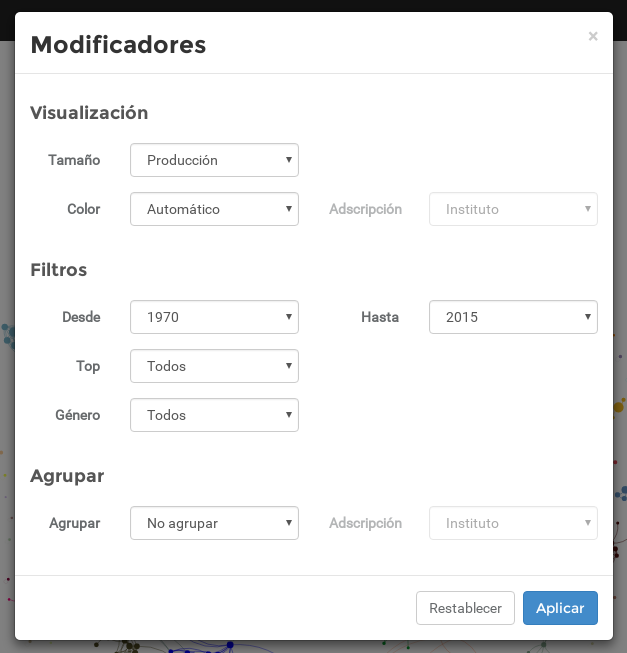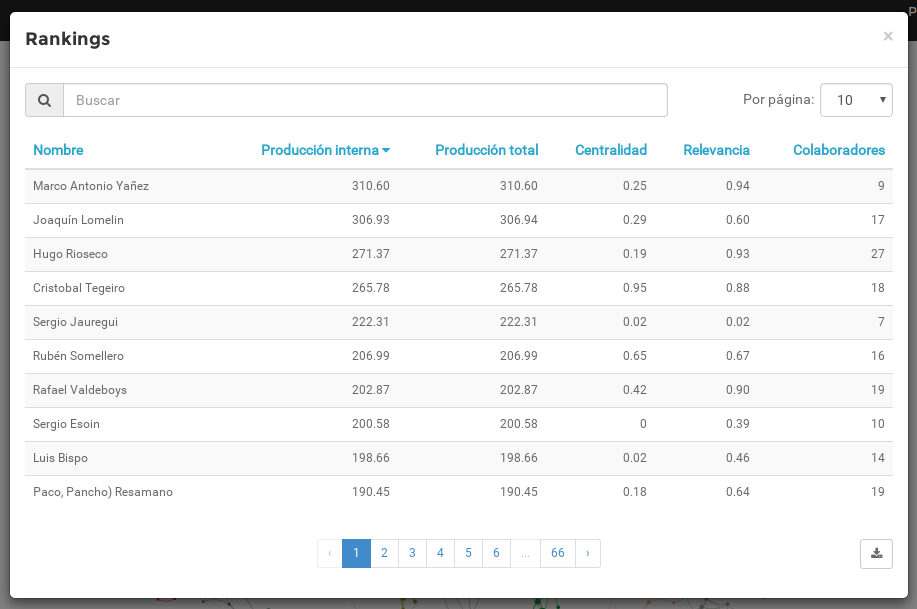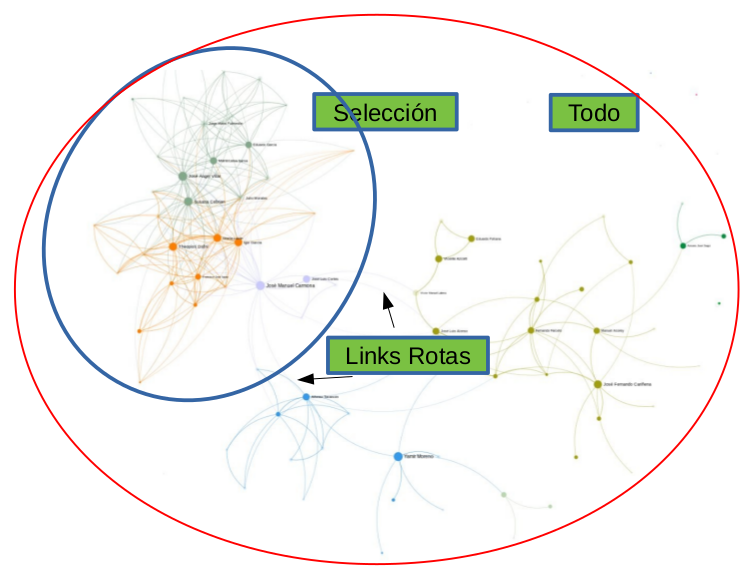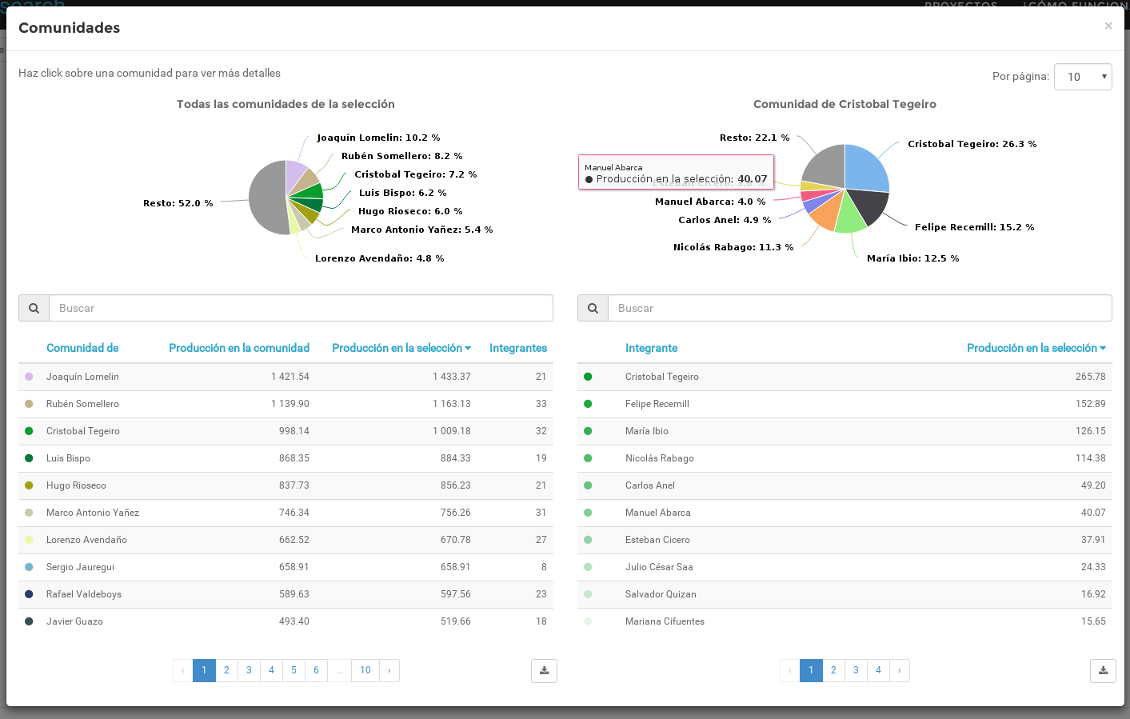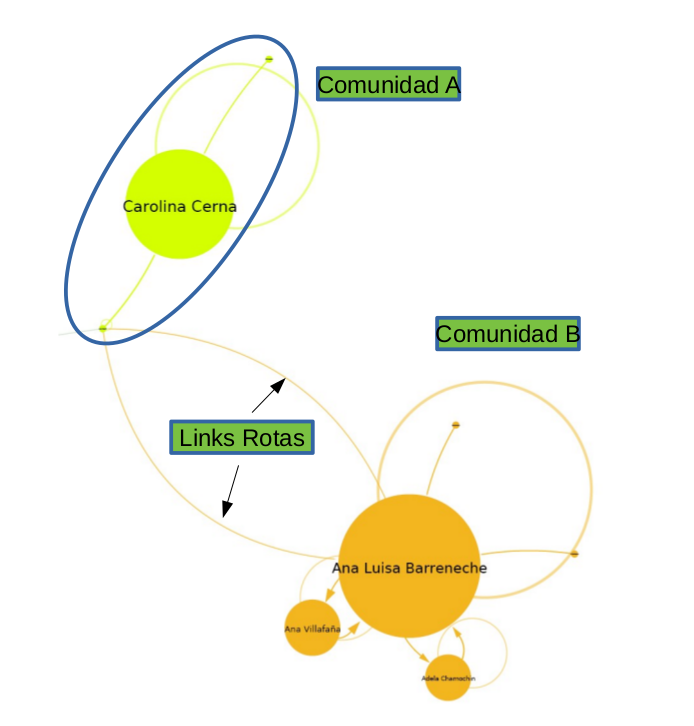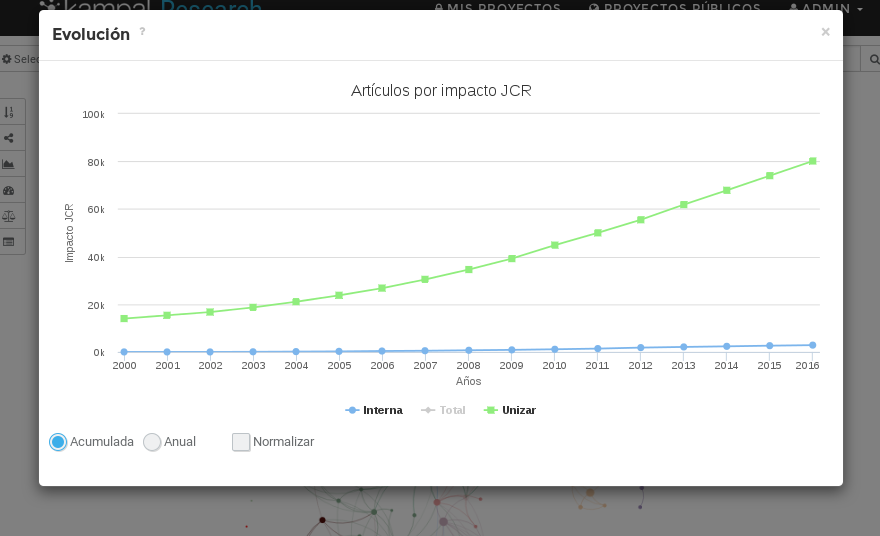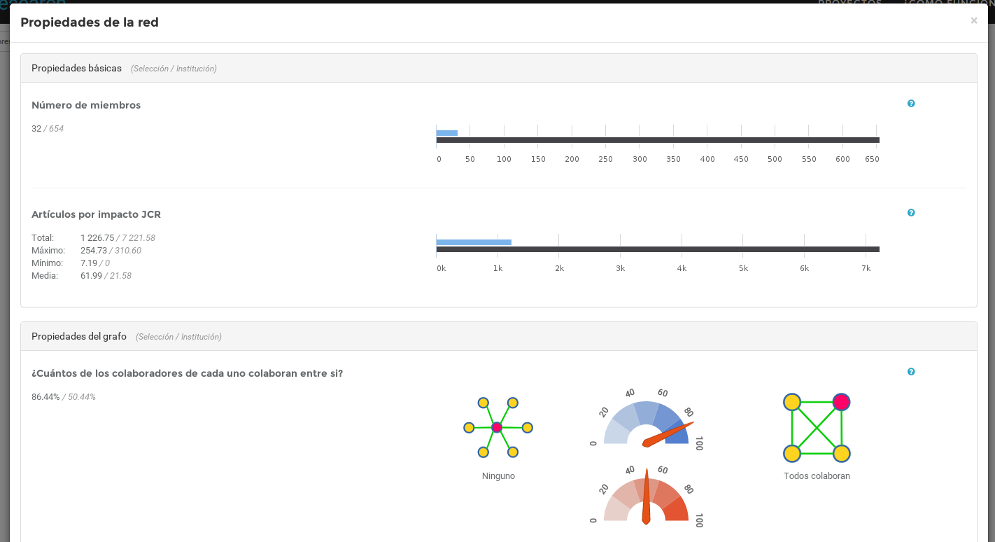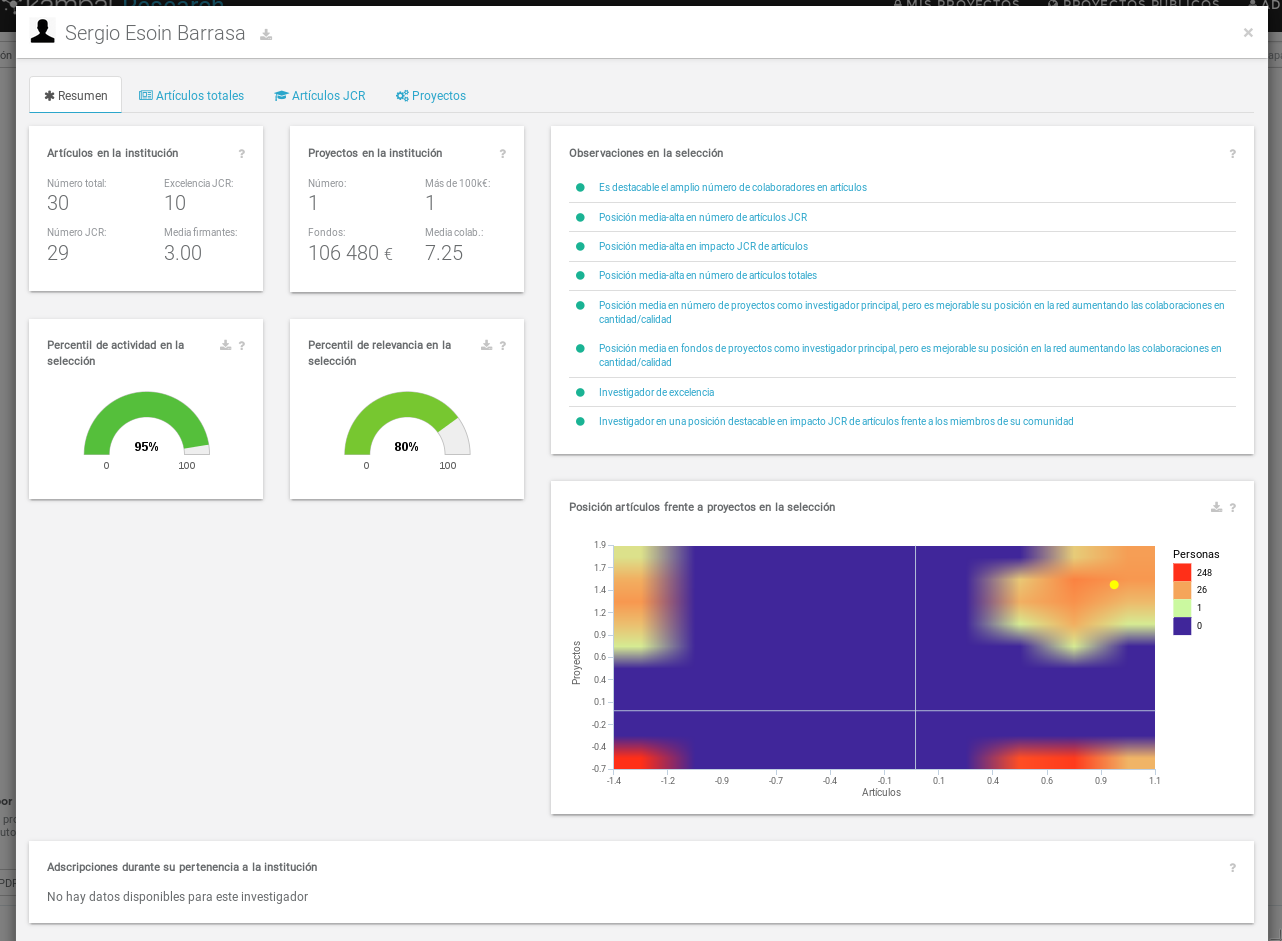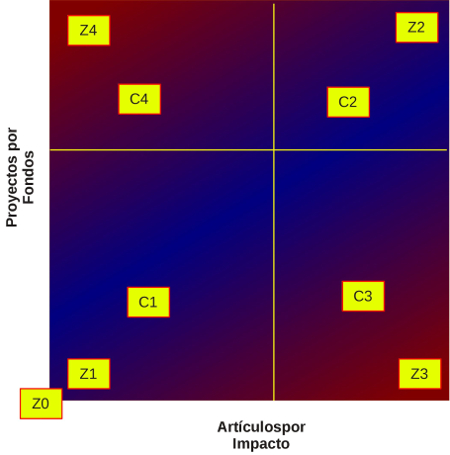Descripción de la aplicación
Kampal Research (KR) es una herramienta desarrollada y comercializada por Kampal Data Solutions para el análisis de centros e instituciones de I+D+i. Para ello se capturan primero todos los datos disponibles de las bases de datos corporativas o de terceros, se analiza y dibuja la estructura organizativa del centro, y se realiza finalmente un análisis estadístico y de redes complejas, mostrando los resultados en forma numérica y gráfica. Se obtiene así un imagen fidedigna del centro, de los grupos que lo componen y de los investigadores particulares, y se da información relevante para la toma de decisiones a corto, medio y largo plazo para una mejora de la institución.
Los datos son la pieza básica, y podemos dividirlos en tres categorías:
- Datos de las personas que componen la institución
- Estructura organizativa (Divisiones, Centros, Departamentos...)
- Datos relativos a la actividad de la institución: artículos, proyectos, tesis, patentes, etc.
Con ellos se realiza un análisis en profundidad de la institución, proporcionando entre otras cosas:
- Análisis estadísticos de actividad
- Construcción de mapas relacionales
- Identificación de comunidades
- Puntos fuertes y débiles en la estructura colaborativa
- Investigadores destacados o periféricos
- Evolución temporal de la actividad
- Identificación de nuevas oportunidades o actividades en recesión
- Informes individuales
- Informes de departamentos, centros, conjuntos de personas...
Diferentes instituciones tienen categorías y clasificaciones diferentes. Kampal se adapta a estas particularidades analizando todos los datos disponibles, que son diferentes para cada Institución. Una Institución puede tener registradas las Patentes, o las estancias Erasmus de sus estudiantes, y otra no. Por eso lo reflejado en este manual puede no corresponder exactamente con una Institución concreta.
En la imagen siguiente puede verse un esquema global del flujo de datos e información en Kampal Research.
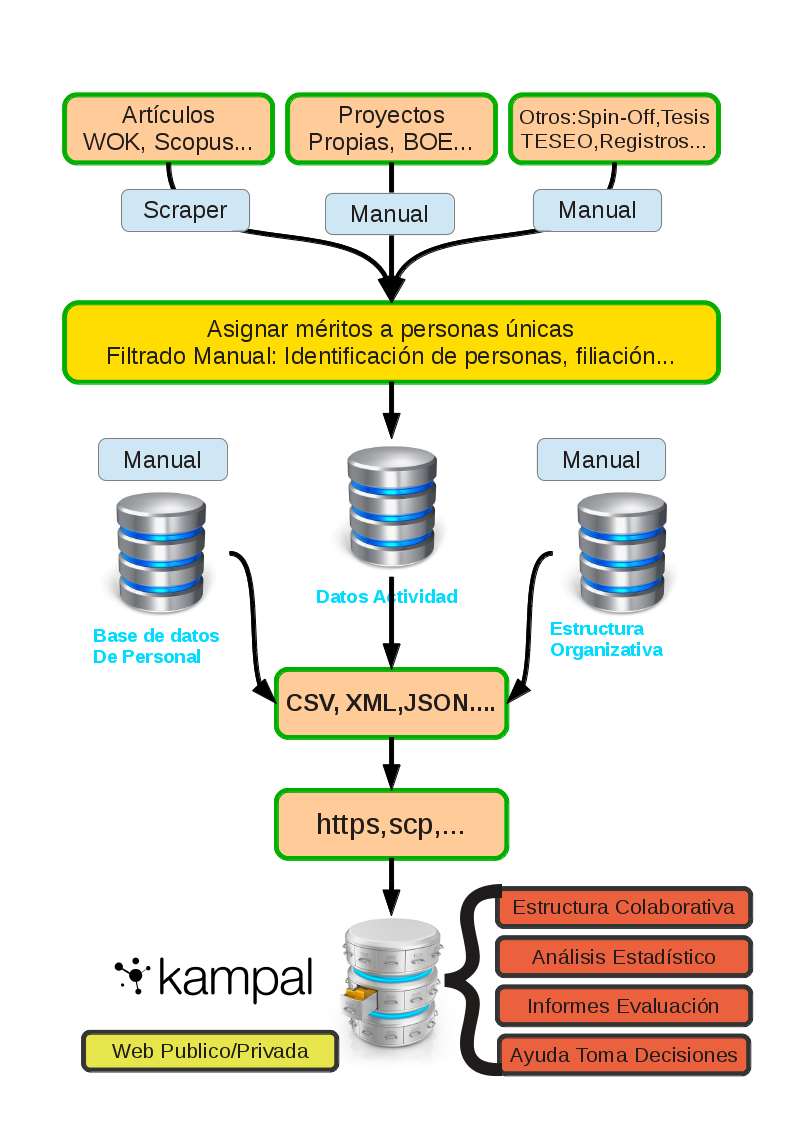
Acceso a la aplicación
El acceso puede ser a través de https://www.kampal.com, donde existe una link a https://research.kampal.com. Allí pueden accederse los proyectos públicos. Si se dispone de una cuenta, puede accederse a todos los proyectos asociados a dicha cuenta, tanto públicos como privados.
Proyectos
En Kampal Research (KR) cada unidad básica de análisis, el Proyecto, en general correspondiendo a una Institución, puede ser configurada como pública o privada. Si es pública será accesible por cualquier visitante de la página, si es privada, sólo con username y password. En cualquier caso otros tipos de control pueden utilizarse, como por ejemplo libre, pero filtrado por al IP de acceso.
Configuración de los proyectos
Los proyectos pueden configurarse por el propietario (superusuario, pueden ser varios) del mismo. Para ello, una vez logado, sobre el icono representativo de cada proyecto puede acceder al menú de administración del proyecto. Existen las siguientes funcionalidades:
- Seleccionar imagen. Se mostrará para el acceso al proyecto.
- Establecer público/privado. Si se declara público, cualquier persona podrá visualizar y navegar por el proyecto (excepto en la configuración). Si es privado, solo podrá hacerse si se dispone de una cuenta con usuario-password
- Crear usuario. El superusuario del proyecto puede crear aquí, caso de que el proyecto sea público, los usuarios que desee, asignándoles un password por defecto. Sólo en proyectos privados. Estos usuarios no tienen acceso al menú de configuración.
- Descripción. Un texto breve descriptivo del proyecto que se mostrara como Info.
- Presentación Institucional. En el icono de acceso a la Institución, puede accederse también a un fichero PDF subido por el superusuario, con la información que se considere oportuna.
Acceso a los proyectos
A través de proyectos públicos o mis proyectos (si se esta logado) se puede acceder a los proyectos correspondientes.
Vemos una lista de proyectos con un breve resumen de cada uno de ellos.
Para acceder al proyecto en cuestión, clickar sobre su imagen; si es público se accede directamente; si es privado, se solicita usuario-password si no se está logado en un usuario autorizado. Para seguir este manual es conveniente ir usando la aplicación. Si no dispone de una cuenta autorizada, la Institución Demo, ficticia y pública, sirve para ello.
